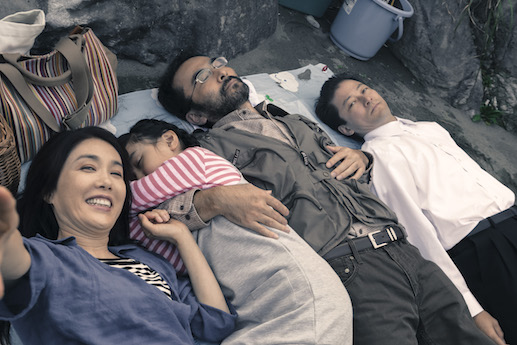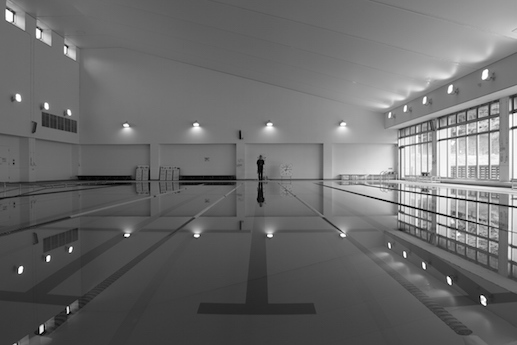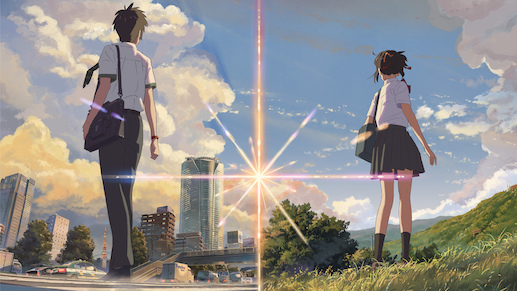TIFF 2016: Japanese Cinema in a Holding Pattern
With the spread of international film festivals since the 1980s, the festival circuit has realigned itself, not only from the center (Euro-America) towards the global periphery, but also from nation-states to global cities, as nodal points in the festival network. This network of festivals plays an important role in introducing directors and stars, marketing their films for distribution, and enveloping them with cultural value. TIFF occupies an interesting place in this ongoing global repositioning, one that is worth examining more closely.
2016 marks the fourth year in Director-General Yasushi Shiina’s plan to reorganize TIFF with the aim of reaching a broader audience and enhancing the festival’s global stature. This year’s edition saw fewer adjustments to the format, but a few noteworthy developments still came into play. First there was the consolidation of festival venues in Roppongi, the addition of the EX Theater as a new site, and the elimination of screenings in Shinjuku. A new “Youth” section was added to cultivate an upcoming generation of filmgoers, and a new series of transnational omnibus films entitled Asian Three-Fold Mirror, sponsored by the Japan Foundation Asia Center in collaboration with TIFF, also emerged.

TIFF’s commitment to showcasing Japanese cinema, anime, Asian national cinemas, and collaboration with specialty film festivals was re-affirmed with three sections devoted to Japanese film, a major retrospective of Mamoru Hosoda’s work, two anime “Special Projects” events, the Crosscut Asia focus on Indonesian cinema, and sections for screening films from the Skip City and Pia film festivals. The mission of these particular sections remains unchanged from last year.
Other changes to this year’s edition of TIFF were a mixed bag: the festival’s new ticketing website exploded on the launching pad and was grounded for days, the more aggressive corporate sponsorship in this year’s festival screenings was unwelcome, but overall press communication was noticeably improved.

Director-General Shiina describes TIFF as a “films-first festival”, dedicated to supporting the filmmakers and industry professionals who create the world of cinema. While this idea reflects the important role that festivals play in the cultivation of film culture, it is important to bear in mind that TIFF remains closely tied to the concerns of the Japanese film industry, and especially to its distribution sector.
At present, many film festivals in the international circuit exist in a kind of décalage between the older paradigms of “national cinemas” and “grands cinéastes”, and newer, more complex unities such as transnational cinema, international co-productions, and cross-media convergence culture. A number of festivals continue to organize film sections under the older paradigms, but these have become increasingly ineffective for understanding the films themselves. Although TIFF has embraced these developments, over the past few years it has also taken a disquieting turn by loosely aligning itself with the Abe government’s strategy of cultural renovation through nationalistic pride.
The Competition
In this year’s Competition section, Chris Kraus’s The Bloom of Yesterday swept the Tokyo Grand Prix. Disguised as a Franco-German romantic comedy, Bloom follows two Holocaust researchers in a darkly twisted exploration of the contradictions of victimhood, guilt, and remembrance. Despite the subject matter, this is in fact a very funny film, though one that will likely make both ends of the political spectrum in Germany squirm with discomfort. The Audience Award went to Jun Robles Lana’s brilliant Die Beautiful. Taking an intriguing, non-sequential view of the life of a transgender beauty queen, Lana’s film entices us to ponder social questions about gender through dazzling performances, a unique treatment of color, and wry humor.

While Competition programming director Yoshihiko Yatabe noted that a number of works in this year’s TIFF involved immigrants and refugees, what struck me about the line-up was rather the strength of the films set in a comedic register. In addition to the aforementioned prize winners, Anna Matison’s After You’re Gone stands out as a Gogolesque satire of the cult of genius in the world of classical ballet, and Roy Szeto’s star-studded Shed Skin Papa takes the magical conceit of a father’s reverse aging on an absurdist blue-sky flight through the history of Hong Kong.
Japanese Cinema at TIFF
The new Japanese films from established talent are presented in TIFF’s Japan Now section, while works by emerging directors are showcased in the Japanese Cinema Splash section. Introduced in last year’s edition of TIFF, the Japan Now section offers a solid line-up of the best of contemporary Japanese film. Experimental film director Kohei Ando not only did an admirable job curating this section, but took the stage during the festival to animate lively post-screening discussions with the directors and talent.

In addition to the two Japanese box office winners for 2016 — Makoto Shinkai’s Your Name and Hideaki Anno’s Shin Godzilla — noteworthy films in the Japan Now section included Koji Fukada’s Harmonium, Lee Sang-il’s Rage, Kiyoshi Kurosawa’s Daguerreotype, Ryusuke Hamaguchi’s Happy Hour, and Shunji Iwai’s A Bride for Rip Van Winkle.
Harmonium, which received a jury prize at this year’s Cannes festival, follows Fukada’s weighty post-disaster drama Sayonara (2015) with a return to more familiar territory. As a companion piece to his earlier Hospitalité (2010), Fukada’s Harmonium once again takes up the theme of the Japanese family in crisis. This time, however, the forces against familial harmony come from within.
Similarly, Rage marks a return to familiar ground for director Lee Sang-il. Like his multiple-award winning Akunin (2013), Rage is also an adaptation of a crime novel by Shuichi Yoshida. This film, however, blends elements of a murder mystery with dashes of paranoid horror and social criticism in an ambitious plot that weaves together three stories in less than 2-1/2 hours. Like the ancient game of three shells in which the performer’s movement leaves us uncertain which shell conceals the pea, Sang-il’s deft cross-cutting draws the audience into the mystery. Whereas Akunin took a cooler, more understated approach to mise-en-scène and storytelling, Rage literally explodes with over-the-top emotion.
![['Daguerreotype' © Film-In-Evolution – Les Productions Balthazar – Frakas Productions – LFDLPA Japan Film Partners – ARTE France Cinéma]](http://www.tokyoartbeat.com/tablog/entries.en/wp-content/uploads/2016/11/TIFF2016_Daguerreotype.jpg)
Kurosawa’s Daguerreotype channels the mood of some of his previous works — especially his rethinking of the horror genre —, but it also breaks new ground as the director’s first film produced in France. This story of an obsessive photographer combines motifs of Euro-American horror with traits of the more traditional Japanese kaidan (ghost stories). By inviting us to reflect on our relationship with photography, Kurosawa poses questions about death’s purchase on life. Once again, he explores liminal, forgotten zones between city and countryside, as we journey to a mysterious Parisian exurb that could have been home to Des Esseintes. While the decision to film in France was likely due in part to the deteriorating conditions for financing in Japan, Daguerreotype has all the qualities of a successful international co-production.
In this regard, we might consider Daguerreotype alongside director-actress Kiki Sugino’s Snow Woman, which also channels a kaidan, and screened in the Competition. The Japanese legend of the snow woman [yuki onna] has been adapted for cinema as far back as 1911. While Sugino’s treatment introduces some compelling new twists, the washed-out video image and uninspiring direction left much to be desired. This is the familiar neglect-of-film-craft syndrome (let’s call it NFC for short, with a wink toward Kyobashi – home of the National Film Center) that plagues so many recent Japanese indies, dooming them to limited domestic distribution.
It is not a question of attaining the level of artistry found in adaptations of yuki onna such as Masaki Kobayashi’s Kwaidan (1964) and Tokuzo Tanaka’s Kaidan Yukijoro (1968), for of course we cannot compare a contemporary indie with films from the heyday of the studio system. But to watch Snow Woman alongside Daguerreotype, it is clearly not just a question of direction but also of financing. It is important to make a distinction here, because the latter is a symptom of larger issues in the Japanese film industry.

The Japan Now line-up also included a “Director in Focus” mini-retrospective of the extraordinary work of Shunji Iwai. This was a real treat, and could have almost been programmed as a separate section. Iwai’s latest film, A Bride for Rip Van Winkle (humorously described as a “Japanese Gone with the Wind”) is a mesmerizing exploration of how interpersonal relationships enter a twilight of virtuality in the present age dominated by social media.
After tickling audiences with And the Mud Ship Sails Away at the 2013 edition of TIFF, writer-director Hirobumi Watanabe returned this year with Poolsideman to win the Best Picture award in the Japanese Cinema Splash section. What begins as a mute, minimalist portrait of an asocial lifeguard unexpectedly morphs into a biting, political film about the place of putatively non-pori (non-political) Japanese in the global information war against “terror”. In an extended cameo, Watanabe himself gives a side-splitting tirade against the “One-Piece generation”. This alone is almost worth the price of admission.
Two other noteworthy films in this year’s Japanese Cinema Splash were At the Terrace, Kenji Yamauchi’s raucous comedy of manners that skewers the well-to-do, and Going the Distance, Yujiro Harumoto’s refreshingly naturalistic story of a boxer fighting outside the ring for friendship and love.

Although new Japanese films also appeared in the Competition (e.g., Japanese Girls Never Die and Snow Woman), several in Special Screenings, the Special Program, and Asian Future sections, the only festival prize for a Japanese production went to Poolsideman. Seen in the context of the international festival circuit, this may be seen as symptomatic of the relative weakness of new Japanese films in the global film market. I’ll return to this issue, below.
Compared to the Japan Now section, the programming for Japanese Classics felt a bit anemic. The 4K restorations of Mizoguchi, Naruse, and Fukasaku are of course fantastic, but they underscore the fact that much of film history is disappearing into vaults. This is particularly acute in Japan, where rights holders are intransigent and the leading festivals have lost the will to organize significant retrospectives of important directors. In the future, we can likely expect more of these isolated 4K restorations (in effect, advance marketing for prestige reissues on UHD Blu-ray), but in this way our view of film heritage narrows like the failing vision of a glaucoma patient.
Anime
In addition to the Mamoru Hosoda retrospective, this year’s TIFF included Sunao Katabuchi’s In This Corner of the World, Makoto Shinkai’s runaway hit Your name, and TIFF Ani!!, a special two-part event for anime fans. TIFF Ani!! included stage greetings and previews of Naoki Miyahara’s feature Pop in Q, followed by the first episode of a new series based on the Chain Chronicle franchise, and a long-awaited adaptation of Project Itoh’s Genocidal Organ, directed by well-known character designer Shuko Murase.

The theatrical anime surprise of 2016 has unquestionably been Your Name [Kimi no na wa]. Both a meditation on adolescent alienation and an allegory of the 3.11 disaster, Shinkai’s super-saturated, high-energy romp offers the notion of musubi (joining) as a motif of overcoming, of reconnecting past and present. Fortunately, international distribution of Your Name has been confirmed, though I wonder how far its popularity outside Japan will reach beyond the otaku demographic. I say this because both thematically and artistically it strikes me as a work that is narrowly targeted at an adolescent audience. Many reviews of Your Name muse on whether Shinkai is “the new Miyazaki”, but it seems rather early to even pose this question.
Youth
This year’s TIFF included a number of films that could be described as “youth drama”, as well as a new Youth section specifically intended “to expose teen audiences to as many films as possible.” Curiously, this section only included “as many as” three films, which, although they are about teens, are not necessarily for teens. Beata Gårdeler’s Flocking, for example, has received a number of awards, but I wonder how many Japanese teens would flock to TIFF for a tragic story about a schoolgirl being raped and ostracized in the provinces of Sweden.
Through these initiatives, TIFF is trying to address the unfortunate fact that cinema simply isn’t very important to Japanese youth. In part, the surprise success of Your Name may be an indicator of the vast “dark matter” of young people who seldom go to theaters. Available data suggests that the age 15-24 cohort comprises only about 10-15% of theater audiences in Japan (compare this to around 30% in the UK). (*1) These numbers, along with the steady decline of Japanese students pursuing long-term study abroad, reflect a growing, inward turn that will have increasingly negative effects on the Japanese film industry in the future. With respect to TIFF, the question would be whether the festival’s initiatives to reach out to younger audiences are adequate.

Festival and Industry
A major film festival like TIFF offers a unique view on the current state of the domestic film industry. While many critics point to the high volume of domestic productions in Japan, in fact only 7-10% of new theatrical releases attract significant box office revenue. (*2) The majority of new domestic films in theaters are low-budget works with little commercial and virtually no export potential. Many are produced under exploitative labor conditions. Leading industry analysts predict the theatrical film market in Japan will steadily decline by 0.9% per year, or 4.5% between 2015 and 2020. (*3)
The simplistic explanation would be that filmmakers simply aren’t creating films that the public wants to see, but this ignores the difficult conditions for financing films in Japan. It also ignores the fact that frequentation for both domestic and foreign productions is low. Among the industrialized G8 countries, Japan already has the lowest frequentation of theaters, and (consequently) some of the highest ticket prices in the world. This situation is not offset by a vigorous secondary market of DVD sales and rentals. Looking at the numbers, it is hard not to conclude that the Japanese public has little time for cinema as a social occasion or a form of leisure. Given the aging demographics and the lack of interest among young people in Japan, the industry’s near-exclusive focus on the domestic market is clearly not sustainable.
Long-term success of national film and media industries depends in large part upon effective cultural policy. Many countries have such policies, but Japan does not. Yes, there is “Cool Japan”, the “Japan Brand Strategy” and the “Japan Cultural Industry Strategy” but cinema is not a meaningful part of any of them. A successful policy for moving image culture depends on a government that is genuinely interested in this culture.

Rather than developing a meaningful cultural policy for cinema, Nagatacho continues to pay lip service to the film industry while shamelessly using events like TIFF as photo-ops for PM Shinzo Abe. TIFF even gives Abe the leading page of the festival catalog. This is a puzzling move, given that under the Abe administration Nagatacho has lost interest in the “cultural diplomacy” of the creative industries and now appears to be focused on one particular future for Japan: re-militarization and ultimately war. It is difficult to see the logic in associating the festival and, by extension, the Japanese film industry, with a right-wing politician who openly antagonizes China, the largest film market in Asia. Bear in mind that while Japan had over 3,400 movie screens in 2015, China had over 31,000.(*4) Having Abe represent TIFF is potentially damaging to the Japanese film industry’s export potential in Asia. It fits, however, with Abe’s strategy to revive patriotism at home by exploiting popular culture as a tool of renovationist nationalism. (*5)
The difficulty of contemporary Japanese cinema is not primarily the films themselves, but rather a larger systemic malaise. In this situation, it is increasingly difficult for young Japanese directors to break through and reach large audiences. TIFF recognizes some of these issues and has taken steps to address them, but the problems are systemic. For the immediate future, then, we can expect festival and industry to remain in a holding pattern.
————-
*1 Kawashima, Nobuko. “Film policy in Japan – an isolated species on the verge of extinction?” International Journal of Cultural Policy 22:5 (2016), 793.
*2 Kawashima, op. cit., 790.
*3 GEM Partners https://gem-standard.com/information/100.
*4 For example, to illustrate the scale of the film market outside of Japan, Makoto Shinkai’s Your Name will open on 7,000 screens in China next week. Nikkei Asian Review http://asia.nikkei.com/Life-Arts/Arts/Japanese-animated-sensation-set-to-conquer-China
*5 Daliot-Bul, Michal. “Japan Brand Strategy: The Taming of ‘Cool Japan’ and the Challenges of Cultural Planning in a Postmodern Age”. Social Science Japan Journal 12:2 (2009), 247–266.)
M. Downing Roberts
M. Downing Roberts



